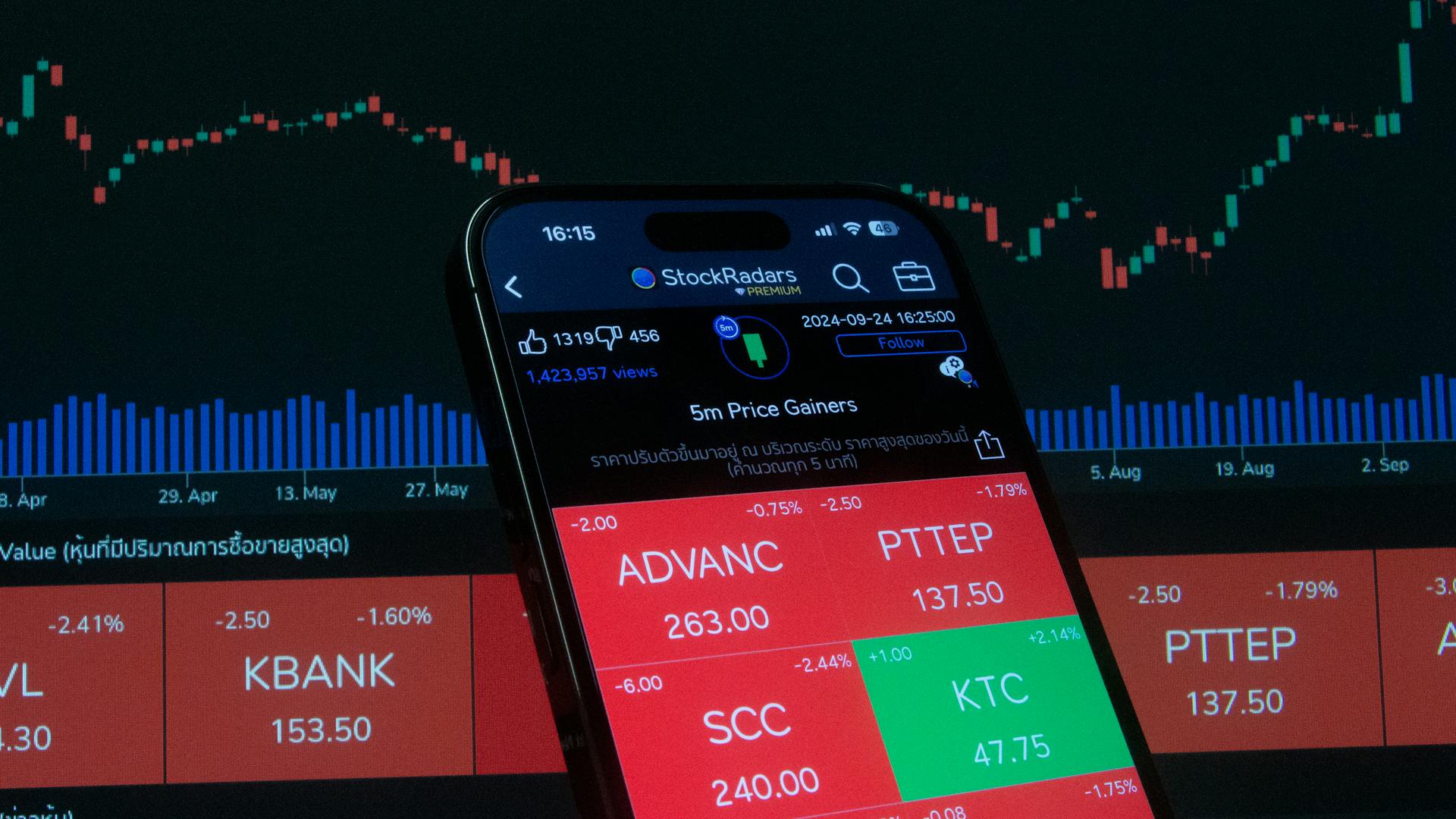
An equal weighted S&P 500 index ETF is a type of investment fund that tracks the performance of the S&P 500 index, but with a twist.
The S&P 500 index is made up of 500 large-cap US stocks, and each stock is weighted equally in an equal weighted ETF.
This means that each stock in the index has the same 1/500th weight, rather than the traditional market-capitalization weighted approach.
The result is a portfolio that provides exposure to the entire S&P 500 index, but with a more diversified and less concentrated approach.
Related reading: Stock Quote for S&p 500
What is an Equal Weight S&P 500 ETF?
An equal-weight S&P 500 ETF is a type of exchange-traded fund that tracks the S&P 500 Equal Weight Index (EWI). This index is an equal-weight version of the popular S&P 500 Index, where every stock has the same weight, regardless of its market capitalization.
The Invesco S&P 500 Equal Weight ETF (RSP) is the most commonly traded equal-weight ETF, tracking the EWI and rebalanced quarterly. Every stock in the index has the same weight, making the performance of each company's stock equally important in determining the total value of the index.
Recommended read: Leveraged Equal Weight Etf
The sector weight in an equal-weight index is directly proportional to the number of companies in the sector. For example, if a sector contains 45 stocks, its weight should theoretically be (45 / 500) x 100 = 9%.
Here's a comparison of market-cap-weighted and equal-weighted index construction:
As you can see, the different weighting schemes result in different sector exposures. For example, the information technology sector had a weight of 28.3% in the S&P 500 Market Weight Index (MWI) but only 13.1% in the EWI.
If this caught your attention, see: Weight Loss Etfs
Investment Benefits and Considerations
Investing in an equal-weighted S&P 500 index ETF, such as RSP, can provide several benefits. Diversification is one of the key advantages, as it can help reduce the risk of your portfolio by spreading your investments across the entire S&P 500 index.
The top 10 companies in the S&P 500 make up over 30% of the index, which means your portfolio may not be properly diversified if you're invested in funds that track the S&P 500 Index. This is because traditional market-cap weighted index funds can be overly concentrated in the largest companies.
Check this out: Vanguard Index Funds Returns
Investing in an equal-weighted index fund can also provide the potential for outperformance, as it allows for more consistent returns and reduces the impact of individual stock performance.
Equal-weighted indexes are more diversified than market capitalization-weighted indexes, which may carry less risk.
A cost-effective and tax-efficient investment option is also a benefit of equal-weighted index ETFs.
You can invest in the S&P 500 by investing in an ETF that tracks the index, such as the SPDR S&P 500 ETF (SPY).
Here are the top three benefits of investing in RSP:
- Diversification
- Outperformance
- Cost and tax efficiency
Key Features and Characteristics
The S&P 500 Equal Weight Index is periodically rebalanced, which is different from the market-weighted S&P 500 index that only needs periodic adjustments. This rebalancing process helps ensure the equal weighting of all companies in the index.
The Invesco S&P 500 Equal Weight UCITS ETF Acc aims to provide the net total return performance of the S&P 500 Equal Weight Index, less the impact of fees. This is stated in the Objectives section of the ETF.
The ETF has a leverage of 100% and does not use currency hedging. This means that the ETF will not use any derivatives to reduce the impact of currency fluctuations on the portfolio.
Curious to learn more? Check out: Equal Weight Etfs
Facts and Characteristics

The Invesco S&P 500 Equal Weight UCITS ETF Acc offers a range of facts and characteristics that are worth noting. The fund's market price and NAV are not explicitly stated, but we can see that the NAV change and premium/discount information are available.
The fund's 30-Day SEC Yield and 30-Day SEC Yield (Unsubsidized) are calculated after deducting the fund's expenses. This is an important consideration for investors, as it gives them a clear picture of the fund's performance.
Here are some key facts about the fund's performance:
The fund's daily return and YTD return are also available, giving investors a clear picture of the fund's performance over time.
A different take: S&p 500 Index Ytd Total Return
Equal Weight vs Market Cap Weight
An equal-weight portfolio invests capital equally into all of the constituents in that portfolio.
This is in contrast to a market cap weight, which invests more capital into the constituents with a higher market cap.
The latter favors larger companies, and the performance of the portfolio is influenced more by the performance of those larger companies.
If this caught your attention, see: Wealthfront Performance vs S&p 500
In fact, a majority of the S&P 500 Index's value is comprised of just the top ten companies that make up the index.
This is a key difference between equal-weight and market cap weight, and it's something to consider when choosing an investment strategy.
Here's a comparison of the two approaches:
As you can see, the two approaches have distinct differences in how they allocate capital.
How it Works and Comparison
The S&P 500 Equal Weight Index (EWI) was created in Jan. 2003, making it an equal-weight version of the popular S&P 500 Index.
Both indexes are comprised of the same stocks, but the different weighting schemes result in two indexes with different properties and benefits for investors. This is because the EWI invests capital equally into all constituents, while the S&P 500 favors larger companies with a higher market cap.
An equal-weight portfolio invests capital equally into all constituents, while a market cap weight will invest more capital into the constituents with a higher market cap.
On a similar theme: Bond Market Index Etf
The performance of the EWI is influenced by the performance of all constituents, whereas the S&P 500's performance is influenced more by the performance of larger companies.
Investing in the S&P 500 is done through an exchange-traded fund (ETF) that tracks the index, such as the SPDR S&P 500 ETF (SPY).
Here's a comparison of the two indexes:
Investing and Costs
Investing in an equal weighted S&P 500 index ETF can be a cost-effective way to gain exposure to the US stock market. The ongoing charge (OCF/TER) and management fee for the Invesco S&P 500 Equal Weight ETF are both 0.20%.
You may be wondering what this means in real terms. The indicative spread, which is the difference between the buying and selling price of the ETF, is 0.11%. This is a relatively low cost, especially when compared to other investment options.
It's essential to note that costs can add up over time, so it's crucial to understand the fees associated with your investment. Always read the Key Investor Information Document, Factsheet, Prospectus, and any other relevant documentation before investing.
Investing in the S&P 500
Investing in the S&P 500 is a popular choice for many investors, but it's not without its limitations. The S&P 500 is an index, so you can't invest directly in it.
The top 10 companies in the S&P 500 make up over 30% of the index, which means your portfolio may not be properly diversified. To address this concern, you can consider investing in an exchange-traded fund (ETF) that tracks the index, such as the SPDR S&P 500 ETF (SPY).
One such ETF is the Invesco S&P 500 Equal Weight ETF (RSP), which tracks the S&P 500 Equal Weight Index. This index allocates a fixed weight (0.2% of the index total) to each constituent, regardless of its market capitalization.
The benefits of investing in an equal-weighted ETF like RSP include diversification, outperformance, and cost and tax efficiency. By spreading the weight of each stock evenly, you can potentially reduce the impact of any one stock's performance on your portfolio.
See what others are reading: How to Invest in S&p 500 Index Funds
Here's a comparison of market-weighted and equal-weighted index construction:
As you can see, the equal-weighted index has a different sector exposure compared to the market-weighted index. For example, the information technology sector has a weight of 13.1% in the equal-weighted index, but only 28.3% in the market-weighted index.
Costs
Investing and costs go hand in hand. Understanding the costs associated with investing is essential before making a decision.
Ongoing charges can eat into your returns, with an OCF (Ongoing Charge Fee) or TER (Total Expense Ratio) of 0.20% in some cases.
Management fees are another cost to consider, also at 0.20% in the example provided.
An indicative spread of 0.11% is another cost to be aware of.
Here are the costs to consider in one place:
It's worth noting that in some cases, additional costs may apply if no TER or OCF is shown. Always check the Key Investor Information Document, Factsheet, Prospectus, and any other relevant documentation before investing.
Frequently Asked Questions
What is the equal weighted index of the S&P 500?
The S&P 500 Equal Weight Index gives equal importance to each of the 50 largest S&P 500 companies. This approach provides a unique perspective on market performance, distinct from the traditional market-cap weighted S&P 500.
Does Schwab have an equal weight S&P 500 ETF?
Yes, Schwab offers an equal-weight S&P 500 ETF that tracks the performance of 500 large-cap US companies, providing a unique investment approach to the popular S&P 500 Index.
Sources
- https://www.invesco.com/us/en/etf/sp-500-equal-weight-rsp.html
- https://www.investopedia.com/articles/exchangetradedfunds/08/market-equal-weight.asp
- https://corporatefinanceinstitute.com/resources/equities/equal-weighted-index/
- https://www.alpsfunds.com/exchange-traded-funds/eql
- https://www.hl.co.uk/shares/shares-search-results/i/invesco-s-and-p-500-equal-weight-index-ucits
Featured Images: pexels.com


